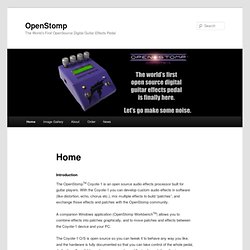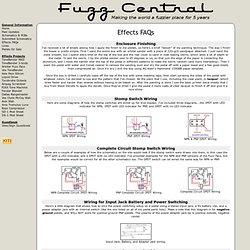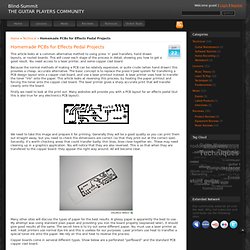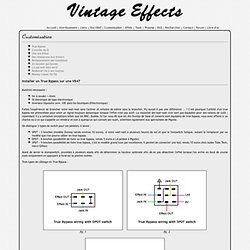

The World's First OpenSource Digital Guitar Effects Pedal. The OpenStompTM Coyote-1 is an open source audio effects processor built for guitar players.

With the Coyote-1 you can develop custom audio effects in software (like distortion, echo, chorus etc.), mix multiple effects to build “patches”, and exchange those effects and patches with the OpenStomp community. A companion Windows application (OpenStomp WorkbenchTM) allows you to combine effects into patches graphically, and to move patches and effects between the Coyote-1 device and your PC. The Coyote-1 O/S is open source so you can tweak it to behave any way you like, and the hardware is fully documented so that you can take control of the whole pedal, dedicating all available system resources toward the implementation of unique custom solutions.
For years I’d wanted a guitar pedal I could program myself. I wanted to write weird effects that nobody else in the industry was making. Modules and patches are saved from / loaded into OpenStomp Workbench as stand-alone files. Fuzz Central. I personally do not think that wiring up PNP transistors (Silicon or Germanium) as negative ground is one of the best ideas.

The PNP transistors are simply not meant to function with a negative ground and osciallation and "motorboating" sounds are common results of wiring a Fuzz Face with PNP transistors as such. Here's some more information from R.G. Keen: While in theory, the negative ground conversion for FF and other PNP circuits ought to work every time, there are a significant number of times where it causes oscillation, motorboating, etc. Sometimes you can clean this up by putting a big freaking capacitor across the power leads, sometimes you also need a low-impedance 0.1µF ceramic, too, and sometimes you need divine intervention. So, in my opinion, I would always leave PNP transistor-equipped circuits as positive ground. Homemade PCBs for Effects Pedal Projects. Jun 22 This article looks at a common alternative method to using press ‘n’ peel transfers, hand drawn layouts, or routed boards.

This will cover each stage of the process in detail, showing you how to get a good result. You need access to a laser printer, and some copper clad board. Because the normal methods of making a PCB can be relativly expensive, or quite crude (when hand drawn) this provides a cheap, accurate alternative. The basic concept is to replace the press’n'peel system for transfering a PCB design layout onto a copper clad board, and use a laser printout instead.
Firstly we need to look at the print out. We need to take this image and prepare it for printing. Many other sites will discuss the types of paper for the best results. Vintage Effects - Vox V847, Fuzz Face, Tube Screamer, Phase 90 & Tremolo. Installer un True Bypass sur une V847 Matériel nécessaire : fer à souder + étain fil électrique de type électronique inverseur bipolaire (env. 10E dans les boutiques d'électronique) Faites l'expérience de brancher votre wah-wah sans l'activer et refaites de même sans la brancher.

N'y aurait-il pas une différence ... ? C'est pourquoi l'utillité d'un true bypass est primordiale pour avoir un signal toujours dynamique lorsque l'effet n'est pas actif. On distingue 3 types de switch pour ces pédales, à savoir : SPDT : 3 broches (modèle Dunlop vendu environ 10 euros), si votre wah-wah a plusieurs heures de vol et que le footswitch fatique, autant le remplacer par un modèle que l'on pourra câbler en true bypass. Avant de serrer le stompswitch, procédez à plusieurs essais afin de déterminer la hauteur optimale afin de ne pas désactiver l'effet lorsque l'on arrive en bout de course mais uniquement en appuyant à fond sur la platine mobile. Trois types de câblage en True Bypass :
A resource for d.i.y. music projects. Build Your Own Clone - Guitar Clone Pedals. General Guitar Gadgets.